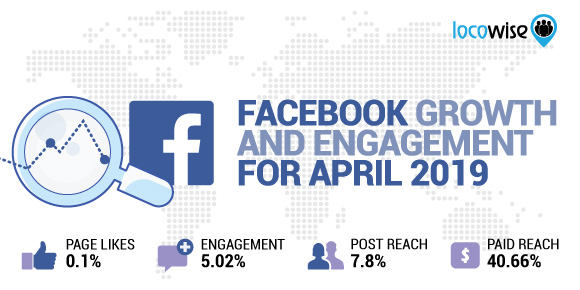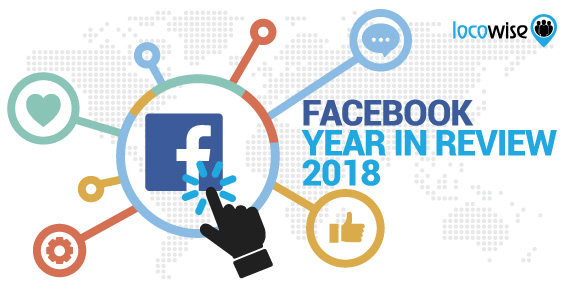Facebook Growth And Engagement For April 2019
Sahail Ashraf posted on 28 May 2019
This is our regular growth and engagement study for Facebook, focusing on April 2019.
As regards engagement, it’s no surprise to find that video engagement is still a dominating force, Our benchmark study shows that engagement with video content was 5.76% in April. That’s an incredible amount, and shows just how much video is at home now on Facebook.
If you’ve got a strong video strategy on Facebook right now, you’re sitting pretty. It continues to be a major force on the platform, and will continue to bring returns on investment in the months ahead.
Taking a look at Fan Growth, nothing has changed. Compared to March, April still saw a 0.10% in increased fans. Perhaps with more Instagram User developing recently, Facebook may not always be the go to Social Media channel for fans.

Reach in April was at 7.8% compared to 7.51% back in March.
Photo reach was 8.02% against the 7.99% in March. Links and their reach was 9.65% against March’s 8.64%. Video reach was at 6.04% against March’s 5.89%. And when it comes to status update reach, that came up as 7.36%, a respectable climb up from March at 7.05%.
Facebook continues to show us that paid reach is changing as regards effectiveness. With organic reach in April, it was 59.34%. This is an increase on March, which stood at 56.64%. Paid reach in April was at 40.66% versus 43.36% in March. So reach seems to be very volatile for brands on Facebook right now.
Post engagement for April stood at 5.02%, which was a drop from the 5.38% in March.
Photo engagement in April was at 4.83%. March gave 5.55%. Link engagement was 4.32% compared to March’s 4.01%. Status update engagement was 4.96% compared to the 4.91% in March.
And in other news…
Facebook recently went deep on how it was going to work even harder to make the platform safer and more comfortable for users. There has been a ton of bad news coming through about how Facebook is letting nasty content online. Recent events in New Zealand, where a mass murderer live streamed his actions during an attack on mosques, have shown that Facebook has to work even harder to keep people safe and to prevent unsafe content from appearing online. It’s a thorny, massive subject, and Facebook decided to dig deep on safety online.
The strategy has the name ‘Reduce, Remove and Inform’, and it was covered again in early April by Guy Rosen and Tessa Lyons, responsible for Integrity of feed at Facebook.
The key points were as follows:
The Community Standards that Facebook has had in place for a long time are to become even more transparent. It has always been the case that Facebook removed content that violates those standards as soon as it can, but obviously stuff does fall through the net.
A lot of the new work is focused on transparency, with Community Standards decisions now being communicated to users as a whole through new updates. There will also be more transparency in how Facebook tackles groups that have content that violates, including tracking the work of moderators and admin staff within those groups.
Other areas covered included more work in the fight against information that is fake or misleading, and clickbait in general. Facebook discussed how it would focus on making sure that they use input from recognised outside experts in future to make the process of removing such content more rigorous and effective, This is a welcome change, and it shows how the platform is facing bigger problems, but with outside help.
In the USA, Facebook is opening its doors to support from the Associated Press, which is a strong effort to reduce fake news and build in more rigorous fact-checking.
Perhaps most interesting of all was the news that Facebook is clamping down hard on groups that spread misinformation on the channel. Any group that has repeatedly been rated false by fact checkers will have its overall News Feed distribution reduced.

Moving Forward
The platform continues to be one of high quality and potential for the vast majority of brands out there. Brands do need to use video effectively if they want to get the most out of Facebook. They also need to ensure that they get the mix of paid and organic traffic right. But it’s clear that Facebook is very much ‘pay to play’.
Would you like to get your hands on some of the most effective metrics available? Of course you would. Try Locowise. We will give you a whole week for free.


